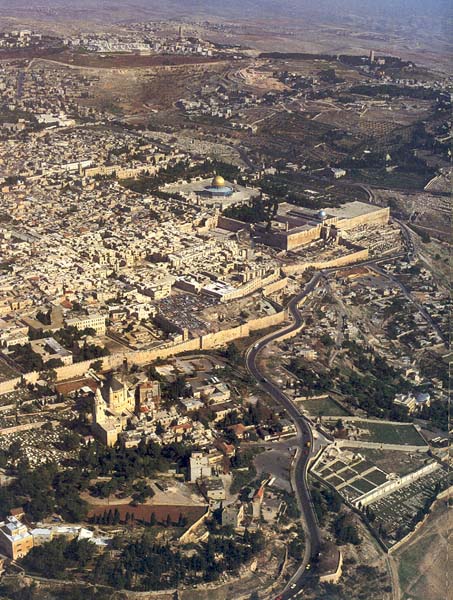Image Details

Werner Braun
Mount Zion. An obscure reference in the writings of the first-century C.E. historian Josephus led archaeologist Bargil Pixner to excavate on Mount Zion, Jerusalem’s high southwestern hill, just inside the curve in the road at the bottom of this photo. Just north of the excavation site, on the summit of Mount Zion, is the Church of the Dormition, with its conical roof and four corner towers. To the east (right) is Jerusalem’s narrower southeastern hill—the City of David, extending south from the Temple Mount, with the golden Dome of the Rock and the silver-domed Al-Aqsa Mosque.
According to Josephus, one entrance in Jerusalem’s First Wall was called “the Gate of the Essenes.” From Josephus’s description of the wall, Pixner inferred that the gate must have stood on Mount Zion, at the southwestern corner of ancient Jerusalem. References in 19th-century excavation reports to a gate in this area led Pixner to renew excavations at the southern tip of Mount Zion. He discovered three superimposed sills of a gate in the ancient Jerusalem wall, the oldest of which he argues was built for the Essenes, the separatist Jewish Torah school often credited with preparing the scrolls found at Qumran.
